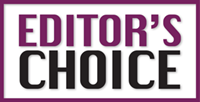
This well organised study from Australia looks at inferior turbinoplasty outcomes in patients with allergy and non-allergic rhinitis who have become refractory to medical treatment. There were 190 patients undergoing turbinoplasty with or without septoplasty assessed in this case-control study by patient reported outcomes on nasal obstruction, global nasal function (GNF) and SNOT-22; nasal peak inspiratory flow was also measured preoperatively and at three months postoperatively. At surgery blood samples were analysed for serum specific IgE to four allergen mixes of dust mite, mould, animal and grass. Patients who returned negative results were placed in the non-allergic rhinitis group. A medial flap turbinoplasty technique was performed by the same surgeon on consecutive patients in a tertiary rhinology practice. A six-point Likert scale was used to assess patient reported nasal obstruction from ‘no problem’ 0 to ‘problem as bad as it can be’ 5. GNF was measured with a 13-point Likert scale, from ‘terrible function’ -6 to ‘excellent function’ +6. There were 190 patients with an average age of 42 years, 44% female were assessed, 21% were asthmatics and 6% smoked. Twenty-four percent were identified as allergic and more commonly were younger, asthmatic and needed a concurrent septoplasty. The nasal obstruction score was 3 or more in 84% of patients preoperatively, average SNOT-22 was 39, a GNF under or equal to 3 was reported by 66% and the average NPIF was 101 L/min. The allergic group reported worse symptoms overall. Both groups of patients improved postoperatively at their three-month check, reported nasal obstruction score of 3 or more fell to 22%, SNOT-22 to 23, GNF under or equal to 3 fell to 6% and NPIF increased to 168 L/min. The allergic group had a higher percentage of patients with an improved GNF score. Overall it seems that both groups did equally well following turbinoplasty surgery and presence of allergy didn’t make a significant difference.



